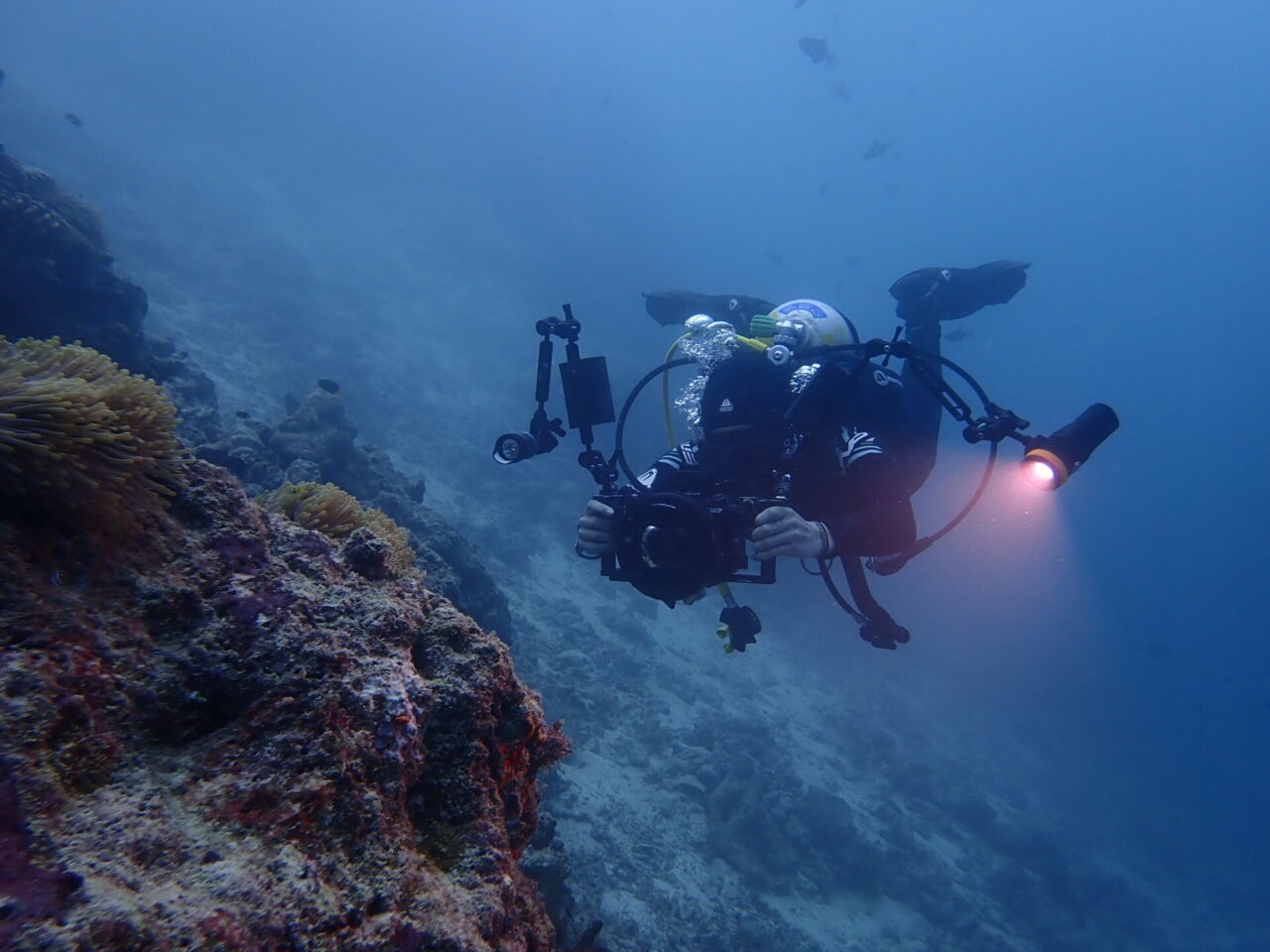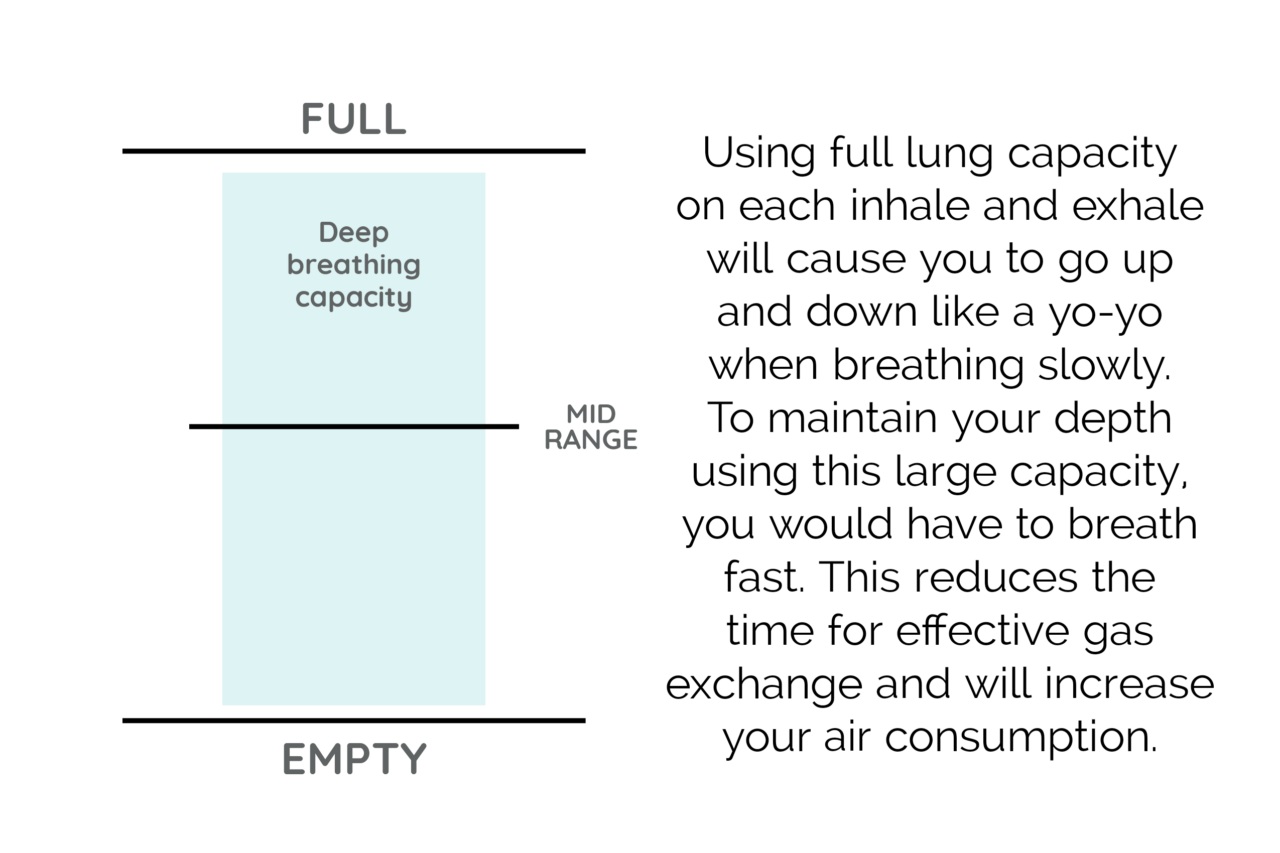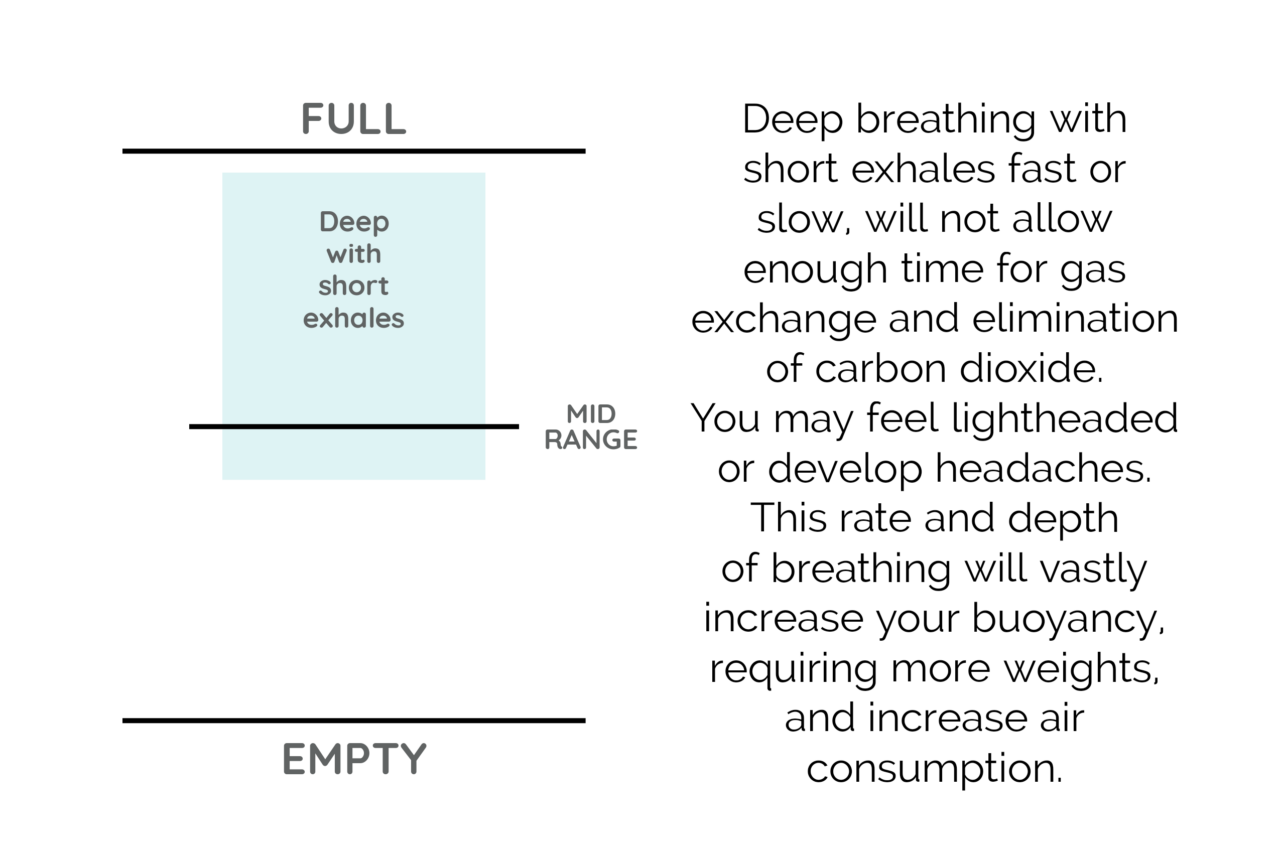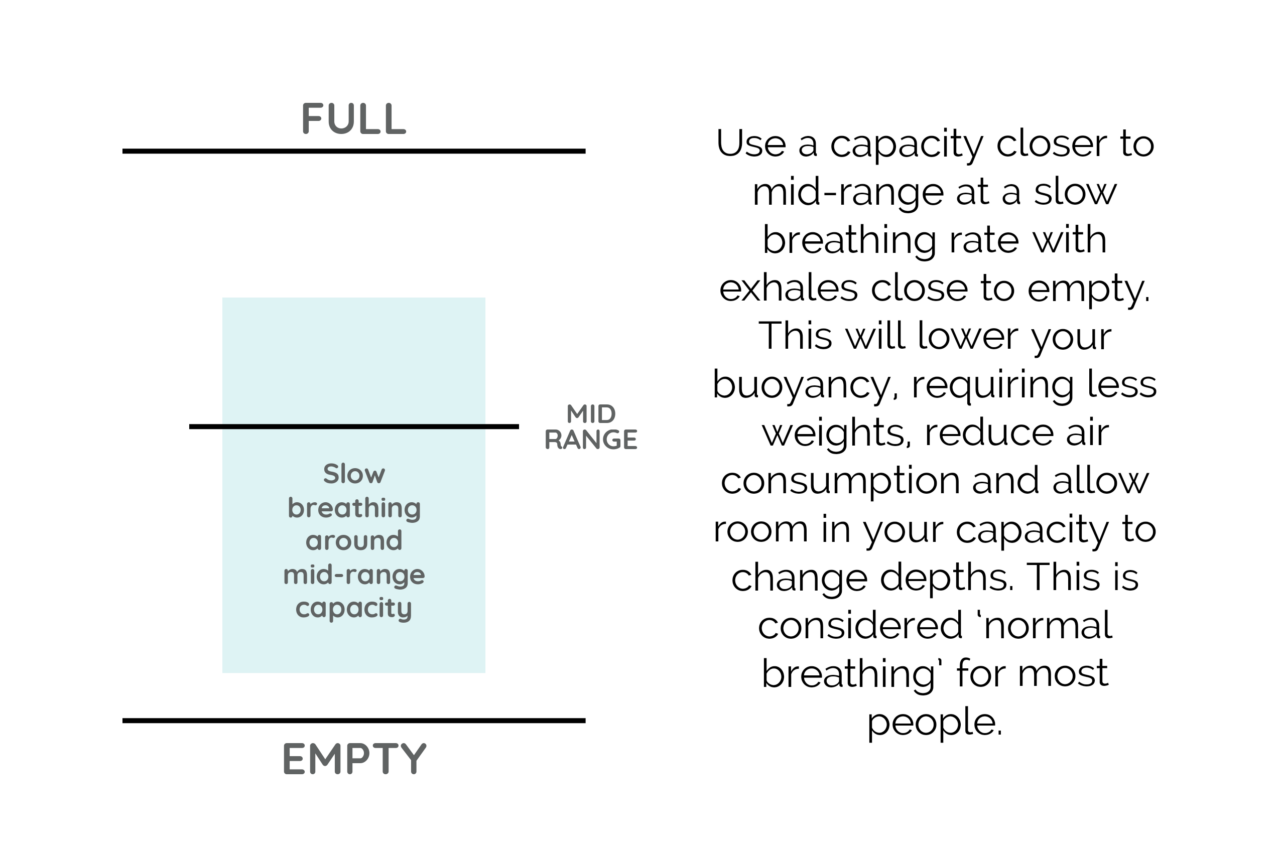Improve your Buoyancy: A Comprehensive Guide – Part 1
A thorough understanding and practical application of buoyancy is crucial for safe and enjoyable diving. What are the key factors influencing buoyancy control, and how can you improve your buoyancy skills?

Many different things factor into perfect buoyancy, each going hand-in-hand. If you are lacking in one area, your overall buoyancy and comfort underwater will be affected. This comprehensive guide is split into 4 parts, each deep-diving into the key elements to improve your buoyancy: breathing control; weighting; use of the BCD; trim and finning techniques.
In part 1, let us discuss the pillar of buoyancy – breathing control. What is the optimum rate and volume of breathing for buoyancy control and what factors can influence it?
We recommend reading all parts of this series to see if you are aware of – and using – these points to improve your buoyancy, even if you think you may have mastered certain elements.
The effect of breathing on buoyancy
The most common, and often overlooked, cause for poor buoyancy control is your breathing! Your lungs play a huge role in buoyancy underwater. Think about it – you have two large air sacks (using simplified terms) that are constantly changing in volume as you breathe. The difference in buoyancy between empty and full lungs is significant. A deep inhale will cause an ascent and a deep exhale will cause a descent, assuming you are pretty close to neutral already with ideal weighting and BCD use.
How to improve your breathing control
Constant deep (full capacity) inhales and exhales will cause you to go up and down like a yo-yo. Instead of using your full lung capacity on each breath, find a slightly lower capacity closer to mid-range, with your exhales close to empty, that is comfortable for you. Keep in mind that you will need to adjust your BCD and weights accordingly, as mentioned in the following parts of the blog series.
Keep your inhales and exhales long and slow, but not to full capacity. Avoid fast and shallow breathing as this is counterintuitive for gas exchange and may induce stress. This simple change in capacity will enable you to hold yourself at a certain depth in the water, with room in your capacity for a full inhale or exhale that can be used to change your depth with ease.



Understanding your lung capacity and breathing rate in a relaxed state on the surface will enable you to learn to breathe the same way underwater.
Exercise: Putting it into practice – right now
As you are reading this, I will assume that you are sitting down and are in a relaxed state of breathing. Notice and analyse your breathing in this relaxed state. You are likely breathing slowly around the mid-capacity of your lung volume.
Now take a deep, full and slow breath. This will be your ascending inhale.
Now, completely release this breath, pushing out all remaining air from your lungs. This will be your descending breath.
And now back to normal, slow breathing. Breathing underwater should be relaxed without much force besides the very slight resistance from the regulator.
Try inhaling and exhaling until your lungs reach various capacities (20%, 40%, 80%, etc). Keep analysing your relaxed state of breathing and practising your depth control capacity before your next diving trip.
There is no rule to say how much of your lungs you have to use – it is entirely up to you! But keep in mind that using a larger lung volume will make you more positively buoyant, require more weights, and may increase your air consumption.
Note: to achieve changes in depth using your breathing, allow some time for the effects to take place underwater. To ascend or descend, use slow breaths to your full maximum and minimum capacity. A slow rate of breathing will allow time for the desired change in depth. Be sure not to immediately counteract your ascent or descent by exhaling too soon or deep on the ascent, or inhaling too soon or deep on the descent. Remember, never hold your breath – especially on the ascent! Keep your breathing slow and airways open at all times while diving.
Improve your buoyancy with our experienced instructors by joining a RAID Explorer 30 course on board our DiveRACE trips! The RAID course focuses on imparting important skills to improve one’s buoyancy.
What if I am not relaxed underwater?
It is common for beginners and experienced divers to be nervous, anxious or even excited before or during a dive. These states of mentality will likely cause your breathing to become deeper and faster than normal. This increased depth and rate of breathing will make you more positively buoyant. In turn, you may feel like you need more weights to sink and your air consumption will increase.
Breath control is actually the key to achieving a relaxed state underwater. If we take meditation for example, breathing is the pillar of a relaxed state of mind and body. You may have read in dive theory that if you encounter any level of stress underwater, stop and breathe. It will likely improve your whole state of relaxation whilst diving by simply understanding and controlling your breathing.
Beware: Physical Exertion!
A small amount of exertion is expected as we are diving, but it should feel like a walk in the park, not a sprint! Increased movement will affect your relaxation and breathing rate. Increased movement and potential overexertion underwater is caused by the following: swimming against currents; exerting yourself beyond your fitness levels; improper use of the BCD such as not adding enough air, especially when you are overweighted; using too much or too little weight; inefficient finning techniques and poor trim; constant kicking; using arms to swim or for stabilisation.
The more we move, the more oxygen our muscles metabolise, leading to increased rate and depth of breathing. In addition, as we metabolise this oxygen, more carbon dioxide is produced. We must slowly exhale to allow time for this carbon dioxide to be expelled. Shallow fast breathing can lead to a build-up of carbon dioxide in the body, especially when overexerted.
What happens when there is too much carbon dioxide build up in you? In such a situation, you would most likely experience breathlessness. Even if you try to breathe in more from your regulator, you will still feel that you are out of breath. Remember that our body has the urge to breathe due to the build up of carbon dioxide and NOT because of a lack of oxygen!
What should you do? Ascend to a shallower depth to reduce the partial pressure of carbon dioxide in your body! Catch your breath by breathing in and out slowly.
Now, we hope that this helped you gain a better understanding of how your breathing can affect buoyancy? Great! Part 2: Weights, can be found here. In this chapter, we will discuss the important signs of being underweighted or overweighted, and how using too little or too many weights can impact your comfort and manoeuvrability underwater.
Read more
- Improve your Buoyancy: Part 4 – Trim and Finning
- Improve your Buoyancy: Part 3 – BCD Use
- Improve your Buoyancy: Part 2 – Weights
- Improve your Buoyancy: A Comprehensive Guide – Part 1
- Dive Deeper: Benefits of the Advanced Open Water Diving Course
